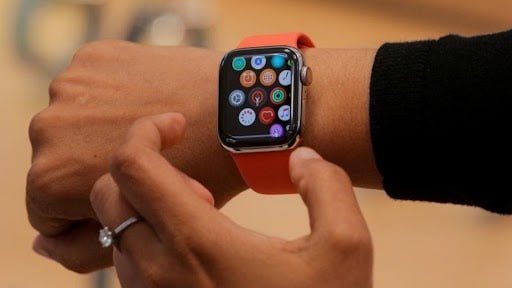Apple introduced the Atrial fibrillation (AFib) detection with Apple Watch series 4. The AFib history is now available in India on Apple Watch series 4 and later for users on watchOS 9.
AFib is a type of irregular heart rhythm determined by the upper chambers of the heart beating out of sync with the lower chambers. While some people with AFib may not experience any symptoms, others may suffer from rapid heartbeat, palpitations, fatigue, or shortness of breath. It is the most common form of serious arrhythmia.
AFib is a chronic condition, and the duration of time spent in AFib can vary. However, regular exercise, sufficient sleep, a heart-healthy diet, maintaining a healthy weight, and treating other medical conditions that can exacerbate AFib can potentially reduce the amount of time the heart remains in AFib. If left untreated, AFib can lead to heart failure or the formation of blood clots, increasing the risk of stroke.
ALSO READ l iPhone 15 may feature stacked battery technology, here’s what it means
The ECG app and irregular rhythm notification, already available on Apple Watch, can identify potential signs of AFib. However, the new AFib History feature takes it a step further by enabling users to track the amount of time their heart shows signs of AFib and manage essential lifestyle factors.
AFib History provides a weekly estimate, known as AFib burden, which indicates the percentage of time the heart shows signs of AFib. This long-term tracking feature allows users to share this information with their healthcare providers for more informed discussions. While AFib can occur at any time, various factors can influence the percentage of time the heart shows signs of AFib. AFib History helps manage the following factors that can impact AFib occurrence- exercise minutes, sleep, weight, alcohol consumption and mindful minutes.
For users who consistently wear their Apple Watch during exercise, sleep, or meditation, the device automatically logs their exercise minutes, sleep, and mindful minutes. Alternatively, users can manually enter the details by tapping on each life factor and selecting “Log.” Moreover, users can explore suggested third-party apps available for download from the App Store to track and manage these factors more effectively.
Setting up AFib History is a simple process. Users need to update their iPhone to the latest iOS version and their Apple Watch to the latest watchOS version. Then, by accessing the Health app on their iPhone, they can navigate to the Heart section, select AFib History, and follow the provided instructions. Users are required to confirm their diagnosis of AFib by a physician, enter their date of birth, and proceed with the setup.
Once sufficient data is collected, users receive weekly alerts on their Apple Watch every Monday, providing them with an estimated percentage of time their heart showed signs of AFib during the previous week. To greater details, users can also review their AFib History within the Health app on their iPhone.
The AFib History estimate appears as a percentage, where a lower percentage indicates a lesser occurrence of AFib, while a higher percentage signifies a more frequent occurrence. It’s important to note that AFib History will never show 0% but instead displays “2% or less.” Additionally, users can compare life factors with their AFib History by tapping on “Show Life Factors.”
Another key aspect of AFib History is the inclusion of AFib History Highlights, which indicate the most frequent days and times when a user’s heart shows signs of AFib. This feature helps individuals assess how various life factors may be impacting their condition. AFib History Highlights become available after six weeks of consistently wearing an Apple Watch.
It’s essential to keep in mind that AFib History is intended for use by individuals aged 22 and older. Also, enabling Low Power Mode may disable background heart measurements, resulting in no AFib History estimates.
Follow FE Tech Bytes on Twitter, Instagram, LinkedIn, Facebook.









